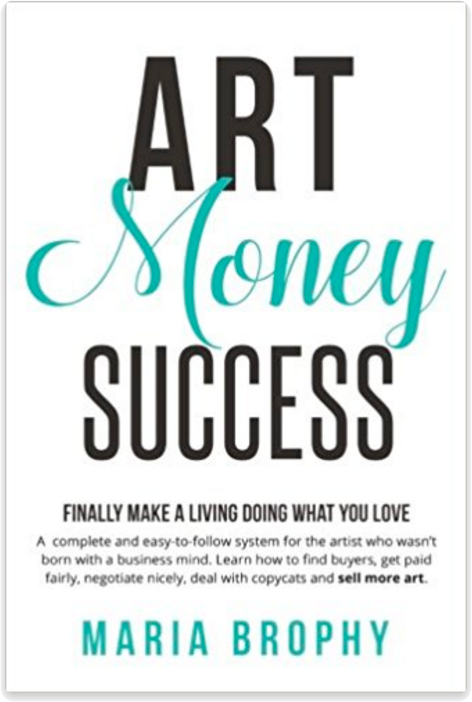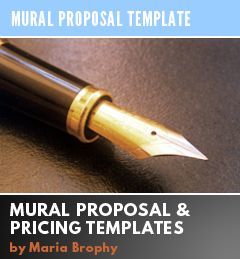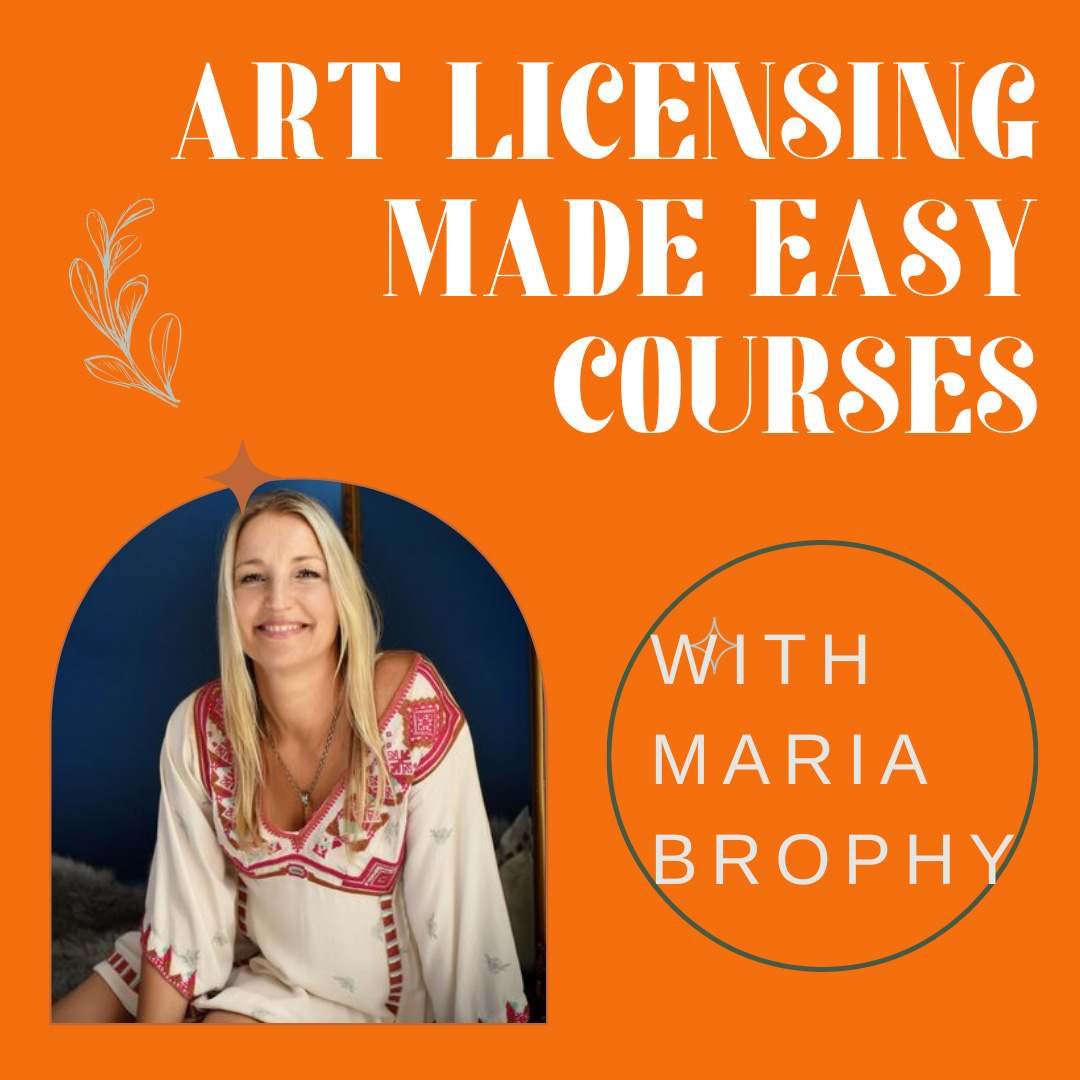
Hooking up with the right manufacturer to license your artwork is a little bit like looking for the right mate. It requires a little research and vetting on your end.
Much like finding that special sexy someone that you want to wake up next to everyday, there are things that you need to know about your potential licensee. Things like their values, principles, and plans for the future. And do they line up with yours?
Just like a devout Christian should never marry an Atheist, unless they want some serious drama in their life, you shouldn’t do a deal with a company that has radically different ideas about what’s cool to do with your artwork, unless you want some serious drama in your life.
To be more specific, if they want to print your art on cheap-ass tees and sell them at the $2.00 store, and you had visions of having top quality $75 tees sold in boutiques, well, then you’ve got a mis-match.
In the case of our Drew Brophy / Palisades co-branded Skateboard line, before closing the deal we had many meetings with our contacts Brad, Kurt and Heidi to talk about our plans for the future of the line, where we wanted them sold, and how we could make them look just awesome. In the end, we were all in agreement as to distribution (core surf, skate and sports shops), what the art will look like and the quality of the deck (awesome).
In the beginning stages of your discussions with a potential licensee, whether it’s on the phone or in person, you’ll want to have a get-to-know you conversation. Much like dating, this first meeting will help you to determine if you share the same values and goals with the license.
Before that first meeting, be sure that you are familiar with the company, their history and the names of the top people that work there. This is easy information to get with a simple search on Google. You should also know what all of their products are and determine in advance which ones you think will work well with your artwork.
Be prepared to ask ten very important questions which will not only make you seem like you’ve done this before, but it will also help to determine if your artwork and brand is a good fit with the company you’re talking to.
The first nine of the topics listed below will be specified in the licensing contract, so asking the questions in your initial conversations will be a step in the right direction to make sure that both parties want the same things.
And being sure that you both want the same thing is the key to a good relationship (just like marriage)!
Ten Questions to Ask Before Hooking Up with a Licensee:
1.) What are your distribution channels? (Translated: where are your products sold?)
Distribution Channels can be broken down in this way:
Specialty: Includes boutiques and specific shops that cater to a particular lifestyle such as surf, skate, snow, fishing, dive, etc.
Upper Tier: High end department stores (i.e. Saks)
Mid tier: Middle end department stores (i.e. Penney’s)
Lower Tier: Target
Mass Market: Wal-Mart, K-Mart, Costco
Other: Catalogs, direct mail, online, televised shopping
You want to know where they sell their stuff because if it’s to Wal-Mart and you don’t want your art sold there, then cancel the engagement!
2.) Who are your top 5 retail accounts?
3.) What other licenses are you currently working with?
(If they haven’t licensed before, it can be a little problematic getting reports on time and accurate. If they have, get the names and contact the licensors for a reference.)
4.) Territory in which you distribute: Territory is named by country or region, such as North America, or they may sell worldwide.
5.) Product Categories you wish to use the art for. (i.e. t-shirts, hooded sweatshirts, tea cups…)
6.) How many will be in the first print run – how many of each product type will you roll out initially?
7.) Estimate of sales projections the first year? The second year? The third year?
Don’t hold them to these estimates, it just gives you an idea of how much they think they can sell.
8.) Which images are you interested in? Go through your website or portfolio and get a feel for which will work best with their products.
9.) What is the projected date that the product will be delivered to retailers?
10.) Provide me with one sample of each product that we will produce. (Usually I’ll ask that the company mails me a sample of each so that we can see the quality of what they currently produce before moving forward.)
It’s important that you get a good picture of how the products bearing your artwork will be sold, in which stores, and when.
Be confident in asking these questions, because it’s your artwork and it’s your future. You are in charge of what happens to both.
Here are a few other articles on this topic that will help you:
HELP – A COMPANY WANTS TO LICENSE MY ART
LICENSING YOUR ART TO A SKATEBOARD OR ANY OTHER COMPANY
WORK SMARTER NOT HARDER – LICENSING 101
THE MAKING OF A GOOD LICENSING AGREEMENT
Maria xxoo
Was this post helpful to you? Please, SUBSCRIBE to my e-mail feeds by putting your e-mail address in the white box below. You’ll get my posts in your in-box and you won’t miss anything! And if you comment below, I’ll put you in my Will!










35 Responses
Great questions!
Thank you so much for the time that you put into this blog. You have no idea how helpful your information really is to someone just starting out. Thanks.
Why do I look like a purple carrot crapping, hahaha
How can I put an avatar up?
Amanda is so right.
I’m glad this info is helpful! Most of what I write about is info that I had trouble finding years ago when first starting out with art licensing.
With regards to the Purple Carrot Crapping Avatar! Ha ha! Here’s what you do: Go to http://www.gravatar.com and click on “GET YOUR GRAVATAR TODAY” and then enter your e-mail address and upload a nice photo of yourself. Then, from now on, when you comment on a blog your photo will show up. No more Crapping Carrot!!!!
Coincidentally, I just posted an interview on my blog today entitled “Is Art Licensing Right for You?” will definitely link to this post – thanks for the info!
Thanks, Carolyn, for stopping by! I read your interview with famed licensed artist Tara Reed. Very enlightening – anyone who’s interested in licensing their art should go to http://bit.ly/cyrOGl and check it out!
Hi Maria, Mike at Syrens told me about you. Glad I checked this out. I am a long time art business guy, with years of experience in galleries, but am just starting to think about licensing an artist that I am repping, my first step into this realm. Your articles are great. Thank you for saving me time and money and for being cool. Drew’s art rocks, btw.
Thanks Maria! I just passed this article on to my artist friends. Great info!
Another great post, Maria. Your advice and knowledge are invaluable; thanks so much for sharing. I’ll post a link on my FB page.
Very helpful info. THANKS!
Great questions, and a very informative and useful blog. I am so glad I have found it. Have just passed it on to other artist friends too.
Some very good thoughts when it comes to licensing.
What about that growing phrase in many agreements within the past 2 years, which gives the website a “Non-exclusive right to alter and market your art for their website’s purposes without limitation”
I know we’ve all seen this and it is not why I create my photographic works. The creator and only the creator should have the right to alter their work. Now if it spelled out that the alterations were only to help the artist sell their works and not for any gain to the website, then perhaps. Your thought?
Fantastic! Such valuable information. Thank you! I will be enjoying your future articles and suggestions.
Thanks a lot Maria !
Great questions, I’m sure I hadn’t thought about several of it !
Very usefull list.
Christel
Thanks so much! I’m getting on a call this afternoon and this helps to make sure my bases are covered!
Great info, thoughtful, well written and informative.
Thank you so much for sharing your knowledge and experience.
William
I’ve done some licensing but just encountered a new situation which I’m baffled by. Do you have any suggestions on a proper fee for use of 8 pieces of my art in a Japanese “PBS style” production for Japanse TV? Thanks for any advice, and for your sharing of information!
Caren, thanks for the question and for reading my blog! I”m not sure what the typical fee is for such a usage. However, I do know that every deal is different, and so I would come up with a number that would be reasonable for you at a price that they would be able/willing to pay. I might offer them the right to show the eight pieces at $250 each, plus any expenses of shipping – this is assuming that the art is already completed, ready to go. OR, offer to sell the pieces to them for them to keep, at a price that you would charge normally – maybe offer a 10% discount if they buy all 8 pieces. If they are commissioning you to create new art, I would charge what I would for any commission.
thanks so much for your thoughts on this, Maria- very much appreciated!
Knocked it out of the ball park…as usual. Thanks Maria! Very valuable and info.
Excellent!!
I just discovered your website and found your answers to be very helpful. I’m a new artist and I met a person who is writing a book in the horror/mystery genre. He noticed one of my paintings that I was showing a local artist and thought it would make a perfect cover for his book. He wanted to buy it outright and I told him I would think it over, but I would much rather license my artwork and keep the painting. My question is, how much should I ask for since I’m not an established artist? I look forward to hearing from you via e-mail.
Marilyn, thanks for the comment! The fact that you are “not an established artist” has little to no bearing on the price of selling or licensing art. Most artists that license their art (and that make great money doing it) are unknown. So remove that factor from the value.
The value lies in other factors: A book cover gets more money up front (either in advance of royalties or as a flat fee) than a page inside the book. Royalty rates are also determined by how many copies will they print.
I recommend you buy a copy of the Graphic Artists Guild Guide to Ethical Pricing – it has standard pricing for book covers, magazine covers, and many other types of licensing your art. It also suggests pricing for selling it outright, which can be up to 3 times the cost of licensing.
Thank you…am enjoying the process so far:-)
Maria,
Thank you for this informative site and for caring about artists and the art community. May God continue to bless you, your family, and your business.
Maria. I click on this older post about licensing and really liked what I found here. Always enjoy your information. What if you are an artist with work that doesn’t look like something that fits in the licensing world. I do paintings (Southern Landscape stuff)and assemblage. When I read your posts, the only fit I can imagine for my work might be for book covers or something like that. Any advice? workthere would be a
Wayne, thanks for the question. Not all art is right for licensing – most abstracts, for example are not. But, your work would do well as art prints (which would be a license with a printer/distributor) and I could see it doing extremely well in hotel/hospitality industry in the South. Try connecting with interior designers or a company like Wendover Art Group, or others like them, where they sell prints to businesses and hotels, etc. I could see that being a perfect fit.
sorry…meant “clicked on.”
Enjoyed this article on
Five Steps to Closing a Deal – Artist’s Trade Show Follow Up
There where some very good pointers that I must admit I where not following as when it comes to the who, what, Where, when and how.
Feel free to check out my article at my site entitled “What Do You Charge For Your Art”
Kenneth C Young
I am just starting out. I am most fearful of posting my art online and and getting ripped off. What is the best way to protect my art?
Thank you very much! You are wonderful!
Hi Maria – thanks so much for this blog, such a great resource. I was approached by a small apparel company to create an illustration that they want to use on shirts and other items they sell. I’ve never licensed out my work before and I have one glaring, probably stupid, question: Do I charge them a free to first CREATE the unique artwork, then work out a licensing percentage (and possibly collect an advance)? Or is the fee to create the work “built-in” to the licensing? I see in the Graphic Artist Guild handbook a line on the illustration charts that says “Fee Per Illustration” and lists a range before it moves onto other fees. Just need to figure out if I need to charge a fee to first sit down and make this artwork they want before we get into how it’s going to be used. Thanks in advance for any advice!!